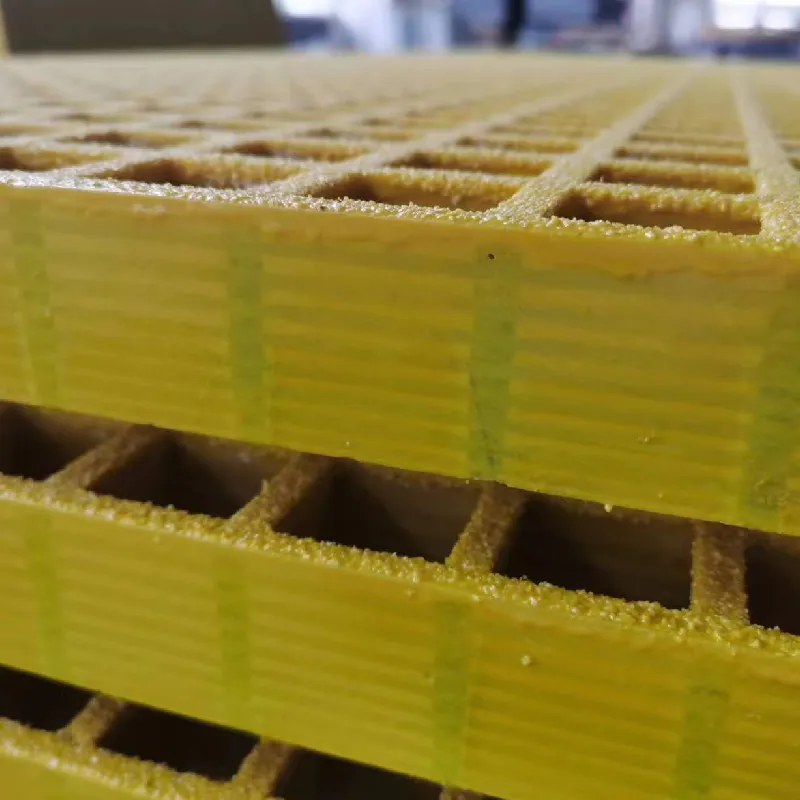loading...
- No. 9, Xingyuan South Street, Dongwaihuan Road, Zaoqiang County, Hengshui, Hebei, China
- admin@zjcomposites.com
- +86 15097380338
- Welcome to visit our website!
Designing Effective Non-Slip Grating Solutions for Enhanced Safety in High-Traffic Areas
Non-Slip Grating Enhancing Safety and Efficiency in Various Applications
Non-slip grating has emerged as a vital solution in many industrial and commercial environments, where safety and efficiency are paramount. This innovative design feature is primarily utilized in walkways, platforms, and other surfaces where traction is essential to prevent slips and falls. As workplaces increasingly prioritize safety standards, the application of non-slip grating becomes even more significant.
Understanding Non-Slip Grating
Non-slip grating is a type of flooring material that incorporates specific design features to enhance surface traction. Typically made from fiberglass, metal, or other durable materials, non-slip gratings can be customized with various patterns and textures that provide grip in both dry and wet conditions. The primary purpose of this grating is to reduce slip hazards, making environments safer, particularly in industries like manufacturing, construction, and food processing.
Applications Across Industries
The application of non-slip grating spans various sectors. In the construction industry, for example, workers often navigate complex environments with potential slip hazards, such as wet concrete or uneven surfaces. Installing non-slip grating on scaffolding and walkways significantly decreases the risk of accidents, thereby fostering a safer working environment.
In the food processing industry, slip hazards are prevalent due to spills and the presence of water. Non-slip grating can be found in processing areas, walk-in coolers, and even in restaurants, ensuring that employees navigate these spaces safely. The ease of cleaning the grating material further contributes to maintaining hygiene standards critical for food safety.
Benefits of Non-Slip Grating
non slip grating

The benefits of non-slip grating extend beyond merely preventing accidents. One of the most significant advantages is the reduction of workplace injuries, which can lead to increased productivity and decreased insurance costs. Maintaining a safe working environment not only protects employees but also helps organizations avoid costly downtime and potential legal issues stemming from workplace injuries.
Moreover, the longevity and durability of non-slip grating materials contribute to cost-effectiveness over time. High-quality grating can withstand harsh environmental conditions, making it a wise investment for businesses focused on long-term safety and efficiency.
Design Considerations
When selecting non-slip grating, several design considerations come into play. The material used should be appropriate for the specific environment—corrosion-resistant materials like fiberglass are ideal for chemical industries, while steel might be preferable in heavy-duty applications. Additionally, the texture and pattern of the grating should be chosen based on anticipated foot traffic and the presence of liquids.
Furthermore, the color and visibility of the non-slip grating can enhance safety. Brightly colored grating materials can help delineate walkways and hazardous areas, increasing overall site awareness for employees and visitors.
Conclusion
In conclusion, non-slip grating represents an essential safety feature across various industries. By reducing slip hazards, improving workplace efficiency, and offering practical design solutions, non-slip grating not only enhances safety but also serves as a critical investment for businesses. As industries continue to evolve and safety regulations become more stringent, the demand for effective non-slip solutions will likely grow, making non-slip grating an integral part of modern workplace design. Investing in such safety measures is not just about compliance; it reflects a commitment to protecting employees and fostering a productive working environment.
-
The Rise of FRP Profiles: Strong, Lightweight, and Built to LastNewsJul.14,2025
-
SMC Panel Tanks: A Modern Water Storage Solution for All EnvironmentsNewsJul.14,2025
-
GRP Grating: A Modern Solution for Safe and Durable Access SystemsNewsJul.14,2025
-
Galvanized Steel Water Tanks: Durable, Reliable, and Ready for UseNewsJul.14,2025
-
FRP Mini Mesh Grating: The Safer, Smarter Flooring SolutionNewsJul.14,2025
-
Exploring FRP Vessels: Durable Solutions for Modern Fluid HandlingNewsJul.14,2025
-
GRP Structures: The Future of Lightweight, High-Performance EngineeringNewsJun.20,2025
